Optimizing the energy storage performance of NaNbO3 ceramics by rare-earth-based composite perovskite Sm(Mg0.5Zr0.5)O3 modification
Abstract
Researchers often improve the energy storage performance of NaNbO3 ceramics through doping with Bi-based composites. Recent studies have shown that rare-earth elements, such as La and Sm, can suppress remanent polarization. In this study, a (1-x)NaNbO3-xSm(Mg0.5Zr0.5)O3 ceramic system was designed. Doping with
Keywords
INTRODUCTION
NaNbO3-based energy storage dielectric ceramics have excellent electrical properties, such as antiferroelectric (AFE) properties, high polarization strength, and relative breakdown resistance. They are lightweight and have a wide working temperature range, which is beneficial for practical applications and has attracted the attention of many researchers[1,2]. By using NaNbO3 as the base and adding a variety of structural compounds to form solid solutions with different properties, energy storage dielectric ceramics with excellent performance can be obtained[3,4]. However, as an AFE material, NaNbO3 decreases the energy storage efficiency owing to the large polarization hysteresis caused by the inevitable field-induced
Researchers often adjust the relaxation behavior of ceramics, reduce the average grain size, stabilize the AFE type, and delay the AFE-FE transition by incorporating doping Bi-based composite perovskites to improve the energy storage performance of NaNbO3-based ceramics. For instance, NaNbO3 doped with
Ye studied 0.96Na0.88La0.12NbO3-0.04CaSnO3[8], and a 2.1 /cm3 recoverable energy storage density (Wrec) and 62% energy storage efficiency (η) were obtained. Although the energy storage performance was general, doping with La inhibited Pr. The ceramics doped with La(Mg0.5Zr0.5)O3 in a Sr0.7Bi0.2TiO3 matrix studied by Chen achieved an energy storage density of 1.22 J/cm3 and an ultrahigh energy storage efficiency of 98.2%[9]. The energy storage density was low, but η was high. Yang[10] obtained a 6.5 J/cm3Wrec and 96% η by adding Sm3+ and Ti4+ to NaNbO3. This shows that the energy storage efficiency of the matrix can be changed by doping with rare-earth elements.
In studies of NaNbO3, BaTiO3, and Sr0.7Bi0.2TiO3 ceramics, doping with Bi (Mg0.5Zr0.5)O3 helped maintain good performance stability[9,11,12]. Based on the above research, Sm(Mg0.5Zr0.5)O3 (SMZ) was introduced into a NaNbO3 matrix, and (1−x)NaNbO3−xSm(Mg0.5Zr0.5)O3 (x = 0.05, 0.08, 0.12, and 0.15) (NN-SMZ) ceramics were designed. The electrical properties, such as energy storage performance, temperature stability, frequency stability, and resistance, were analyzed and studied. It is concluded that the energy storage performance of the matrix can be improved by doping Sm3+ ions at the A site of the perovskite structure, and the performance stability of the ceramics can be improved.
EXPERIMENTAL PROCEDURE
NN-SMZ was prepared using a conventional solid-state reaction. Na2CO3 (99.8%), Nb2O5 (99%), Sm2O3 (99.99%), ZrO2 (99%), and MgO (98.5%) were stoichiometrically weighed and ball-milled with Zr balls in ethanol for 5 h. After drying, the mixed powders were calcined at 900 °C for 5 h and ball-milled again for
RESULTS AND DISCUSSION
The X-Ray diffraction analysis (XRD) patterns of the NN-SMZ ceramics are shown in Figure 1A. Enlarging the characteristic peak clearly shows that with the addition of SMZ, the (200) characteristic peak shifts to a lower angle, indicating that the sample lattice has expanded[13,14]. After doping with SMZ, Sm3+(1.24 Å) partially replaces Na+ (1.39 Å) at the A site, and Mg2+ (0.72 Å) and Zr4+ (0.72 Å) replace the smaller Nb5+
Figure 1. XRD patterns of NaNbO3-xSm(Mg0.5Zr0.5)O3 ceramics (0.05 ≤ x ≤ 0.15) (A), (B) XRD refinement of 0.05 SMZ component,
The Raman spectra of each component sample are shown in Figure 2A. The gradually widened peak width and gradually decreased peak intensity indicate that the complexity of the sample and the disorder of ions increased owing to the nonequivalent substitution of ions with different radii at the A and B sites[16,17]. To study further the effect of adding SMZ to the system, Peakfit software was used to analyze the Raman spectra of each component sample. The center position, peak intensity, and peak half-width of the vibration modes v1 and v5 fitted by each Raman component are shown in Figure 2B and C. With an increase in the SMZ content, the peak intensities of vibration modes v1 and v5 gradually decreased, and the half-width and height gradually increased, which proved that the complexity of the sample and the disorder of the ions increased. The vibration mode v5 moved to a high-wavenumber position, and a blue shift occurred. The red shift of the vibration mode v1 may be caused by the phase transition of the sample, which corresponds to the XRD refinement results in this study[18].
Figure 2. Raman Test Diagram of NaNbO3-xSm(Mg0.5Zr0.5)O3 ceramics (0.05 ≤ x ≤ 0.15) (A) and the Raman vibration modes v1 (B) and v5 (C) of NN-SMZ components are plotted.
Scanning electron microscopy (SEM) images of the NN-SMZ components under the natural surface and the average grain size fitted by the Gaussian function are shown in Figure 3A. The surfaces of the NN-SMZ ceramic component samples were dense and had no obvious defects, and the average grain size generally increased. The grain sizes of 0.08 SMZ and 0.12 SMZ significantly increased. According to the XRD refinement results, the appearance of the pseudo-cubic phase is one reason for this phenomenon. According to the formula Eb∝G−1/2, the grain size (G) is negatively correlated with the breakdown field strength (Eb). The grain size of each component is smaller than that of pure NaNbO3 (generally tens of micrometers)[19,20], which helps the samples obtain a higher Eb[21]. The energy dispersive spectrometry (EDS) mapping of the 0.08 SMZ ceramic is shown in Figure 3B. Each element was uniformly distributed without enrichment, indicating that the SMZ was uniformly dissolved in the NN lattice[22]. An atomic force microscopy analysis was performed on the samples after hot corrosion. The test results are shown in Supplementary Figure 3. The surface of each component sample was dense, without obvious pores or defects. The sintering densities of the NN-SMZ samples are shown in Supplementary Table 2. The incorporation of the SMZ reduced the sintering temperature, improved the density of the ceramics, and helped the samples obtain a higher breakdown field strength.
A Transmission Electron Microscope test can effectively observe the domain morphology and phase structure of FE materials. The domain morphology of pure NaNbO3 ceramics is shown in Figure 4A and clearly shows the existence of a 180° domain. The domain morphology of the 0.08 SMZ sample is shown in Figure 4B, and the larger domain cannot be clearly observed, which is related to the gradual transition of the phase structure of the sample to the weak polar pseudocubic phase[23]. In NaNbO3 ceramics, due to the presence of large-sized domains, when the polarization direction changes, the direction of the domain will be irreversible, which greatly deteriorates the energy storage performance of the ceramics. The domain sizes of the 0.08 SMZ ceramic sample were smaller, which was beneficial to the sample to obtain a faster polarization response in the charge and discharge test, reduced the polarization loss, and achieved the purpose of improving the energy storage performance of the sample[24]. Figure 4C and D depicts selected area electron diffraction (SAED) images of 0.08 SMZ samples taken in the [100]c and [111]c directions. The presence of (eoo)/2 and (oee)/2 in the [100]c direction and the presence of (ooe)/2 superlattice diffraction spots in the [111]c direction (o and e are odd and even, respectively) proved the existence of octahedral distortion, indicating that this was a commensurate modulation phase structure with two-fold unit cell. The SEAD images also proved the perovskite structure of the 0.08 SMZ sample again[25].
Figure 4. (A) Domain morphology of NN ceramics, (B) domain morphology of 0.08 SMZ ceramics. Lattice fringes and SAED patterns of 0.92 NN-0.08 SMZ ceramics along (C) [100]c and (D) [111]c.
To investigate the change in the dielectric constant of NN-SMZ ceramics with temperature, the dielectric constant of NN-SMZ was tested at -160 °C to 180 °C. The temperature spectra of the components are shown in Figure 5A-D, where the dielectric peaks of the components near 0 °C formed because of the interference of ice during the temperature change. They are not phase transition peaks[26]. The figure shows that the 0.05 SMZ sample had an obvious dielectric peak; the Curie temperature was near -120 °C, and the dielectric peak of the 0.08 SMZ sample appeared at -175.6 °C. The dielectric peaks of the 0.12 SMZ and
Figure 5. Temperature dependences of dielectric constant and loss of NN-SMZ ceramics: (A) x = 0.05, (B) x = 0.08, (C) x = 0.12,
The dispersion coefficients of 0.05 SMZ and 0.08 SMZ samples fitted according to the dielectric peak are shown in Figure 5E and F. The increase in the SMZ content reduces the dispersion coefficient of the sample. This means that the relaxation and the polar microregion of the sample are reduced, which is consistent with the Raman and XRD results. The frequency stability of the dielectric constant of the NN-SMZ ceramics is shown in Supplementary Figure 4. The samples of each component can maintain the stability of the dielectric constant over a wide frequency range of 103-106[28].
The P-E curve obtained by the FE test of the sample provides direct evidence for evaluating the energy storage performance of the sample, and the relevant energy storage performance calculation formula is provided in the supporting materials[6]. The test results for the NN-SMZ component samples at a field strength of 400 kV/cm are shown in Figure 6A-C. With an increase in x, the maximum polarization intensity Pmax of the sample decreased, the residual polarization intensity Pr decreased, and the obtained energy storage efficiency increased from 71.1% to 93.1%. This is because, with the incorporation of SMZ, the phase of the NN-SMZ sample gradually transformed into a weakly polar pseudocubic phase, which reduced the Pmax and Pr of the sample, leading to the gradual reduction of domains in the sample[23]. The results are consistent with the results of the Raman test and dielectric-constant-frequency test, proving that the doping of rare-earth-based composite perovskites can significantly increase the energy storage efficiency of the sample. Figure 6D-F shows the maximum breakdown field strength FE test diagrams of the component samples of NN-SMZ. As the figure shows, the breakdown field strength of the sample increased with the increase in the ratio. When x = 0.08, the sample exhibited the best energy storage performance. The breakdown field strength of the sample was 560 kV/cm, the energy storage density was 4.3 J/cm3, and the energy storage efficiency was 85.6%. When x = 0.15, the breakdown field strength of the sample reached
Figure 6. For NN-SMZ ceramics: at the electric field of 400 kV/cm: Unipolar P-E hysteresis loops (A), the corresponding energy storage properties (B) and polarization (C) at various content of SMZ. Unipolar P-E hysteresis loops (D), the corresponding energy storage properties (E), and polarization (F) at all content of SMZ. 0.08 SMZ unipolar P-E hysteresis loops (G), the corresponding energy storage properties (H) and polarization (I) at 0.08 SMZ.
The frequency stability of the P-E curve of the 0.08 SMZ ceramics is shown in Figure 7A-C. At an electric field of 350 kV/cm and different frequencies, the 0.08 SMZ ceramics exhibited a stable energy storage density of 1.9 ± 0.02 J/cm3 and a stable energy storage efficiency. This shows that 0.08 SMZ ceramics have excellent frequency stability and practical application prospects[30,31]. The temperature stability of the
Figure 7. Unipolar P-E hysteresis loops (A and D), the corresponding energy storage properties (B and E), and Pmax, ΔP, and Pr (C and F) for 0.08 SMZ ceramics at different frequencies and temperatures under different electric fields.
To study the intrinsic mechanism of high Eb in NN-SMZ ceramics, we discussed the non-intrinsic factors and intrinsic factors with the sample[31]. We used the phase field method to simulate the electrical breakdown behavior of pure NaNbO3 ceramics and 0.08 SMZ ceramic samples. The initial geometric model of the simulation was extracted from the SEM test results, and the simulation results of the final breakdown path are shown in Figure 8; the calculation formula used to simulate electrical breakdown has been provided in the support material[32]. Figure 8A1-A3 is the simulation result of pure NaNbO3 ceramics. There was almost no obvious electrical tree branch phenomenon observed. With the increase of time, pure NaNbO3 ceramics experienced a rapid electrical breakdown. The breakdown simulation of the 0.08 SMZ sample is shown in Figure 8B1-B3, and the electrical tree branch phenomenon of the sample can be clearly observed. The reason for this difference is that the average grain sizes of 0.08 SMZ ceramics were much smaller than those of pure NaNbO3 ceramics. The smaller grain sizes were beneficial to generate more energy dissipation regions to suppress the breakdown behavior, which was manifested as the phenomenon of electrical tree branches. Usually, the more branches indicated that the material was more difficult to be broken down, which can also be proved by the marking time.
Figure 8. Breakdown paths for (1-x)NN-xSMZ samples under various times. x = 0: Figure 8A1-A3, x = 0.08: Figure 8B1-B3.
To understand further the intrinsic reason for the high Eb of the doped SMZ sample, impedance tests were conducted on the NN-SMZ sample. Because the impedance test pattern curve was semicircular and there was almost no difference between the grain boundary and the grain response, a set of RQC structures was used to fit the resistance of the NN-SMZ sample[33,34]. The test and fitting results are shown in Figure 9A-D. In Supplementary Figure 5, the curve of the imaginary part changing with frequency has only a single peak, which also proves this point. Supplementary Figure 6 shows the relationship between the AC conductivity of the NN-SMZ sample and the frequency change. The incorporation of SMZ reduced the conductivity of the sample, which was beneficial for obtaining a higher breakdown field strength.
Figure 9. Impedance diagram of NN-SMZ ceramics. (A) x = 0.05, (B) x = 0.08, (C) x = 0.12, and (D) x = 0.15. (E) Impedance diagram of NN-SMZ components at 560 °C, (F) Band gap energy for NN-SMZ ceramics, (G) The fitted activation energy of NN-SMZ.
Figure 9E shows that under the test condition of 560 °C, the resistance of the sample increased gradually with the incorporation of SMZ. When x = 0.15, the resistance of the sample reached a maximum value of 70,515 Ω. According to the activation energy calculation formula, the activation energy of each component is shown in Figure 9G. The activation energy of the sample increases with increasing SMZ doping. In general, the higher the activation energy of the sample, the larger its energy barrier, the more energy it needs to break down, and the higher its breakdown field strength[34,35]. To study the bandgap of the NN-SMZ ceramics further, ultraviolet test results of the samples are shown in Figure 9F. The Tauc equation was used to estimate the Eg value[36]. The Eg values of the NN-SMZ samples were 3.31, 3.37, 3.42, and 3.45 eV, which also indicated that the bandgap of the samples gradually increased[37]. This may have been caused by the incorporation of Sm2O3 and ZrO2, which had large bandgaps. In summary, due to its significantly smaller grain size, the NN-SMZ sample obtained a higher breakdown field strength than the pure NN sample. Although the average grain sizes of each component increased with the increase of SMZ doping amount, the resistance and conductivity of each component increased. In terms of intrinsic factors, the band gap of the sample was increased, which helped the sample to obtain a high Eb.
The charge-discharge test of the sample was helpful for exploring its actual energy storage capacity. The data for the NN-SMZ samples under different electric fields at room temperature are shown in
Figure 10. (A) Underdamped discharge waveform of 0.08 SMZ ceramics at room temperature. (B) The changes of Imax, CD, and PD at room temperature. (C) Over-damped discharge current curves of 0.08 SMZ ceramics at different temperatures. (D) The changes of
To judge the feasibility of the practical application of the NN-SMZ ceramics, a 210-Ω resistor was connected to perform an overdamped charge-discharge test on the sample. As shown in Figure 10C and D and Supplementary Figure 8A, when the applied electric field of the 0.08 SMZ sample gradually increased to
CONCLUSION
In this study, NN-SMZ was prepared by solid-phase sintering. The crystal phase of NN-SMZ gradually changed from the orthorhombic phase (Pnma) to the pseudocubic phase (Pm3m) with increasing SMZ doping. Meanwhile, an increase in the SMZ significantly reduced the residual polarization intensity of the system and improved the breakdown field strength, resistance, and activation energy of the system. In addition, 0.92NaNbO3-0.08 SMZ achieved a 4.3 J/cm3 energy storage density and 85.6% energy storage efficiency at 560 kV/cm. Finally, the 0.08 SMZ ceramics showed excellent dielectric stability in charge and discharge tests, indicating their potential for practical applications. In summary, rare-earth-based composite perovskites can be used to optimize the energy storage performance of NaNbO3 ceramics.
DECLARATIONS
Authors’ contributionsWriting original draft, Writing review and editing: Xu M
Conceptualization : Xu M, Zhou H, Chen X
Methodology: Xu M
Investigation and data curation: Xu M, Zeng D, Wang X, Nong P, Pan Y, Dong Q, Wang J
Supervision, project administration and funding acquisition: Zhou H, Chen X
Availability of data and materialsNot applicable.
Financial support and sponsorshipThis work was supported by the Natural Science Foundation of China (No. 12064007, No. 11664008 and No. 61761015), Natural Science Foundation of Guangxi (No. 2018GXNSFFA050001, No. 2017GXNSFDA198027, and No. 2017GXNSFFA198011), and High-Level Innovation Team and Outstanding Scholar Program of Guangxi Institutes.
Conflicts of interestAll authors declared that there are no conflicts of interest.
Ethical approval and consent to participateNot applicable.
Consent for publicationNot applicable.
Copyright© The Author(s) 2023.
Supplementary MaterialsREFERENCES
1. Wang X, Dong Q, Pan Y, et al. Enhanced energy storage performances of Bi(Ni1/2Sb2/3)O3 added NaNbO3 relaxor ferroelectric ceramics. Ceram Int 2022;48:13862-8.
2. Wang W, Zhang L, Shi W, et al. Enhanced energy storage properties in lead-free (Na0.5Bi0.5)0.7Sr0.3TiO3-based relaxor ferroelectric ceramics through a cooperative optimization strategy. ACS Appl Mater Interfaces 2023;15:6990-7001.
3. Pan Y, Wang X, Dong Q, et al. Enhanced energy storage properties of Bi(Ni2/3Nb1/6Ta1/6)O3-NaNbO3 solid solution lead-free ceramics. Ceram Int 2022;48:26466-75.
4. Dong Q, Wang X, Wang J, et al. Enhanced energy storage performance in Na(1-3x)BixNb0.85Ta0.15O3 relaxor ferroelectric ceramics. Ceram Int 2022;48:776-83.
5. Xie A, Qi H, Zuo R, Tian A, Chen J, Zhang S. An environmentally-benign NaNbO3 based perovskite antiferroelectric alternative to traditional lead-based counterparts. J Mater Chem C 2019;7:15153-61.
6. Xie A, Zuo R, Qiao Z, Fu Z, Hu T, Fei L. NaNbO3-(Bi0.5Li0.5)TiO3 lead-free relaxor ferroelectric capacitors with superior energy-storage performances via multiple synergistic design. Adv Energy Mater 2021;11:2101378.
7. Chen H, Chen X, Shi J, et al. Achieving ultrahigh energy storage density in NaNbO3-Bi(Ni0.5Zr0.5)O3 solid solution by enhancing the breakdown electric field. Ceram Int 2020;46:28407-13.
8. Ye J, Wang G, Chen X, Dong X. Effect of rare-earth doping on the dielectric property and polarization behavior of antiferroelectric sodium niobate-based ceramics. J Mater 2021;7:339-46.
9. Chen J, Si F, Zhao P, Zhang S, Tang B. Novel lead-free (1-x)Sr0.7Bi0.2TiO3-xLa(Mg0.5Zr0.5)O3 energy storage ceramics with high charge-discharge and excellent temperature-stable dielectric properties. Ceram Int 2021;47:26215-23.
10. Yang L, Qi J, Yang M, et al. High comprehensive energy storage properties in (Sm, Ti) co-doped sodium niobate ceramics. Appl Phys Lett 2023;122:192901.
11. Qu N, Du H, Hao X. A new strategy to realize high comprehensive energy storage properties in lead-free bulk ceramics. J Mater Chem C 2019;7:7993-8002.
12. Yuan Q, Li G, Yao F, et al. Simultaneously achieved temperature-insensitive high energy density and efficiency in domain engineered BaTiO3-Bi(Mg0.5Zr0.5)O3 lead-free relaxor ferroelectrics. Nano Energy 2018;52:203-10.
13. Zeng D, Dong Q, Nong P, et al. Achieving high energy storage density in BaTiO3- (Bi0.5Li0.5)(Ti0.5Sn0.5)O3 lead-free relaxor ferroelectric ceramics. J Alloys Compd 2023;937:168455.
14. Dong X, Li X, Chen H, et al. Realizing enhanced energy storage and hardness performances in 0.90NaNbO3-0.10Bi(Zn0.5Sn0.5)O3 ceramics. J Adv Ceram 2022;11:729-41.
15. Shannon RD. Revised effective ionic radii and systematic studies of interatomic distances in halides and chalcogenides. Acta Cryst A 1976;32:751-67.
16. Hreščak J, Dražić G, Deluca M, et al. Donor doping of K0.5Na0.5NbO3 ceramics with strontium and its implications to grain size, phase composition and crystal structure. J Eur Ceram Soc 2017;37:2073-82.
17. Schulz T, Veerapandiyan VK, Gindel T, Deluca M, Töpfer J. Hexavalent (Me - W/Mo)-modified (Ba,Ca)TiO3-Bi(Mg,Me)O3 perovskites for high-temperature dielectrics. J Am Ceram Soc 2020;103:6881-92.
18. Chen H, Wang X, Dong X, et al. Adjusting the energy-storage characteristics of 0.95NaNbO3-0.05Bi(Mg0.5Sn0.5)O3 ceramics by doping linear perovskite materials. ACS Appl Mater Interfaces 2022;14:25609-19.
19. Shi J, Chen X, Sun C, et al. Superior thermal and frequency stability and decent fatigue endurance of high energy storage properties in NaNbO3-based lead-free ceramics. Ceram Int 2020;46:25731-7.
20. Xie A, Qi H, Zuo R. Achieving remarkable amplification of energy-storage density in two-step sintered NaNbO3-SrTiO3 antiferroelectric capacitors through dual adjustment of local heterogeneity and grain scale. ACS Appl Mater Interfaces 2020;12:19467-75.
21. Dai Z, Xie J, Fan X, et al. Enhanced energy storage properties and stability of Sr(Sc0.5Nb0.5)O3 modified
22. Wang H, Yuan H, Li X, et al. Enhanced energy density and discharged efficiency of lead-free relaxor
23. Li X, Xing J, Wang F, et al. Realizing high energy density and efficiency simultaneously in (Bi0.5Na0.5)0.7Sr0.3TiO3-based ceramics via introducing linear dielectric CaTiO3. J Mater Chem A 2022;10:18343-53.
24. Liu G, Chen L, Qi H. Energy storage properties of NaNbO3-based lead-free superparaelectrics with large antiferrodistortion. Microstructures 2023;3:2023009.
25. Xie A, Chen J, Zuo J, et al. Excellent energy-storage performance of (0.85 - x)NaNbO3-xNaSbO3-0.15(Na0.5La0.5)TiO3 antiferroelectric ceramics through B-site Sb5+ driven phase transition. ACS Appl Mater Interfaces 2023;15:22301-9.
26. Pang F, Chen X, Shi J, et al. Bi(Mg0.5Sn0.5)O3-doped NaNbO3 lead-free ceramics achieve excellent energy-storage and
27. Ding Y, Li P, He J, et al. Simultaneously achieving high energy-storage efficiency and density in Bi-modified SrTiO3-based relaxor ferroelectrics by ion selective engineering. Compos B Eng 2022;230:109493.
28. Zhou M, Liang R, Zhou Z, Dong X. Novel BaTiO3-based lead-free ceramic capacitors featuring high energy storage density, high power density, and excellent stability. J Mater Chem C 2018;6:8528-37.
29. Yadav AK, Fan H, Yan B, et al. High strain and high energy density of lead-free (Bi0.50Na0.40K0.10)0.94Ba0.06Ti(1−x)(Al0.50Ta0.50)xO3 perovskite ceramics. J Mater Sci 2020;55:11137-50.
30. Li T, Chen P, Li F, Wang C. Energy storage performance of Na0.5Bi0.5TiO3-SrTiO3 lead-free relaxors modified by AgNb0.85Ta0.15O3. Chem Eng J 2021;406:127151.
31. Li X, Tan Z, Xing J, et al. Simultaneous enhancement of energy storage and hardness performances in (Na0.5Bi0.5)0.7Sr0.3TiO3-based relaxor ferroelectrics via multiscale regulation. ACS Appl Mater Interfaces 2022;14:42245-57.
32. Cai Z, Wang X, Hong W, Luo B, Zhao Q, Li L. Grain-size-dependent dielectric properties in nanograin ferroelectrics. J Am Ceram Soc 2018;101:5487-96.
33. Li F, Zhai J, Shen B, Zeng H, Jian X, Lu S. Multifunctionality of lead-free BiFeO3-based ergodic relaxor ferroelectric ceramics: high energy storage performance and electrocaloric effect. J Alloys Compd 2019;803:185-92.
34. Zhao N, Fan H, Li C, Huang F, Cao J, Li Z. Enhanced energy storage density and efficiency in Sm3+-doped
35. Zhang M, Yang H, Li D, Lin Y. Excellent energy density and power density achieved in K0.5Na0.5NbO3-based ceramics with high optical transparency. J Alloys Compd 2020;829:154565.
36. Pu Y, Wang W, Guo X, Shi R, Yang M, Li J. Enhancing the energy storage properties of Ca0.5Sr0.5TiO3-based lead-free linear dielectric ceramics with excellent stability through regulating grain boundary defects. J Mater Chem C 2019;7:14384-93.
37. Dong X, Li X, Chen X, Wu J, Zhou H. Simultaneous enhancement of polarization and breakdown strength in lead-free BaTiO3-based ceramics. Chem Eng J 2021;409:128231.
38. Tian A, Zuo R, Qi H, Shi M. Large energy-storage density in transition-metal oxide modified NaNbO3-Bi(Mg0.5Ti0.5)O3 lead-free ceramics through regulating the antiferroelectric phase structure. J Mater Chem A 2020;8:8352-9.
39. Muhammad R, Ali A, Camargo J, et al. Enhanced thermal stability in dielectric properties of NaNbO3-modified BaTiO3-BiMg1/2Ti1/2O3 ceramics for X9R-MLCC applications. Crystals 2022;12:141.
40. Xu M, Wang X, Nong P, et al. 0.90(0.88NaNbO3-0.12Bi(Ni0.5Zr0.5)O3)-0.10CaTiO3 lead-free dielectric ceramics with high energy storage properties. ACS Appl Energy Mater 2023;6:1630-8.
41. Li X, Cheng Y, Wang F, et al. Enhancement of energy storage and hardness of (Na0.5Bi0.5)0.7Sr0.3TiO3-based relaxor ferroelectrics via introducing Ba(Mg1/3Nb2/3)O3. Chem Eng J 2022;431:133441.
Cite This Article
Export citation file: BibTeX | RIS
OAE Style
Xu M, Zeng D, Wang X, Nong P, Pan Y, Dong Q, Wang J, Zhou H, Chen X. Optimizing the energy storage performance of NaNbO3 ceramics by rare-earth-based composite perovskite Sm(Mg0.5Zr0.5)O3 modification. Microstructures 2023;3:2023034. http://dx.doi.org/10.20517/microstructures.2023.19
AMA Style
Xu M, Zeng D, Wang X, Nong P, Pan Y, Dong Q, Wang J, Zhou H, Chen X. Optimizing the energy storage performance of NaNbO3 ceramics by rare-earth-based composite perovskite Sm(Mg0.5Zr0.5)O3 modification. Microstructures. 2023; 3(4): 2023034. http://dx.doi.org/10.20517/microstructures.2023.19
Chicago/Turabian Style
Xu, Mingzhao, Dafu Zeng, Xiang Wang, Peng Nong, Yue Pan, Qinpeng Dong, Jiaming Wang, Huanfu Zhou, Xiuli Chen. 2023. "Optimizing the energy storage performance of NaNbO3 ceramics by rare-earth-based composite perovskite Sm(Mg0.5Zr0.5)O3 modification" Microstructures. 3, no.4: 2023034. http://dx.doi.org/10.20517/microstructures.2023.19
ACS Style
Xu, M.; Zeng D.; Wang X.; Nong P.; Pan Y.; Dong Q.; Wang J.; Zhou H.; Chen X. Optimizing the energy storage performance of NaNbO3 ceramics by rare-earth-based composite perovskite Sm(Mg0.5Zr0.5)O3 modification. Microstructures. 2023, 3, 2023034. http://dx.doi.org/10.20517/microstructures.2023.19
About This Article
Special Issue
Copyright
Data & Comments
Data
 Cite This Article 10 clicks
Cite This Article 10 clicks


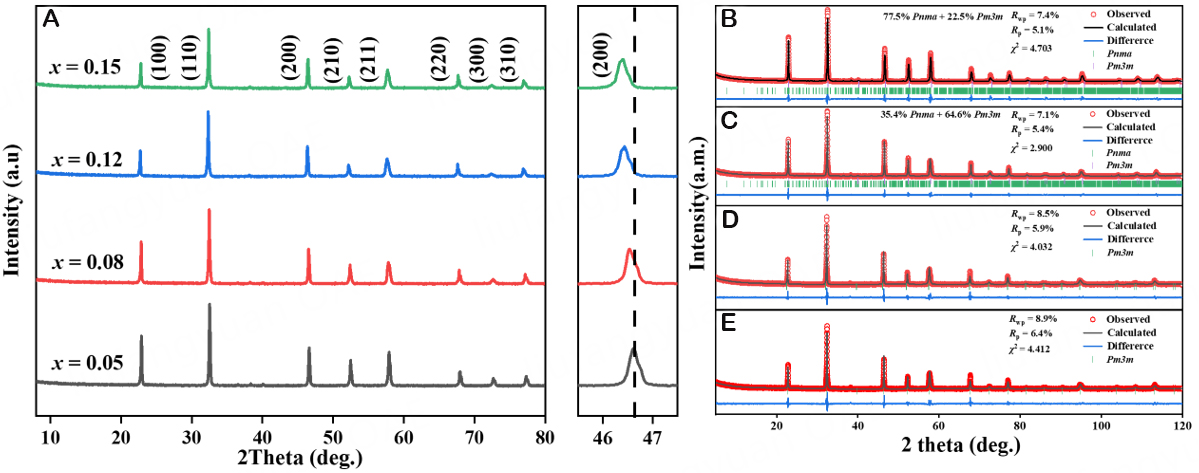
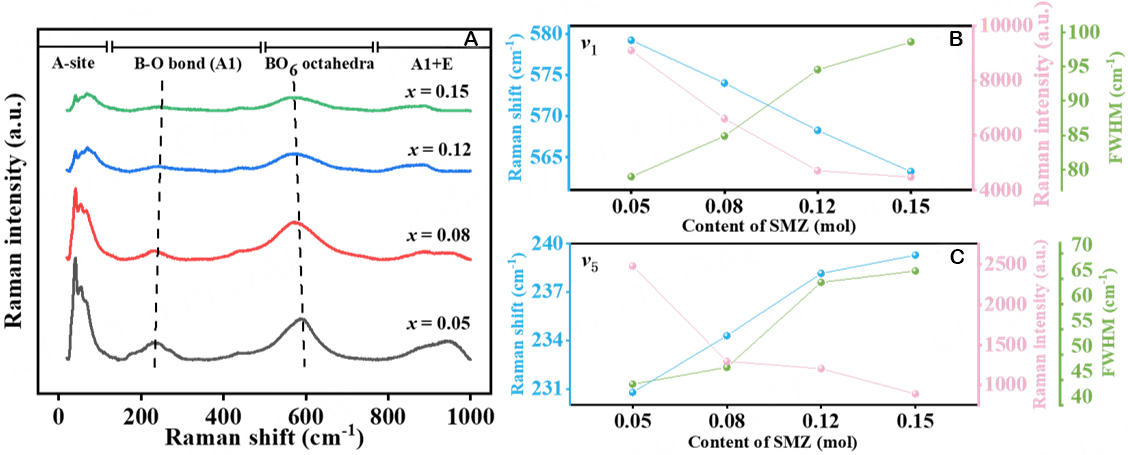



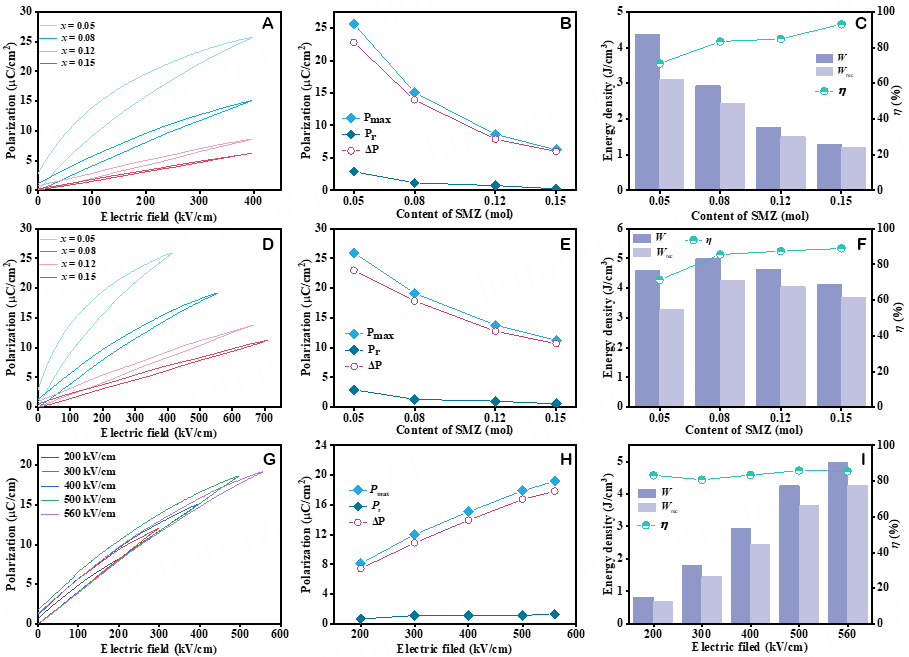
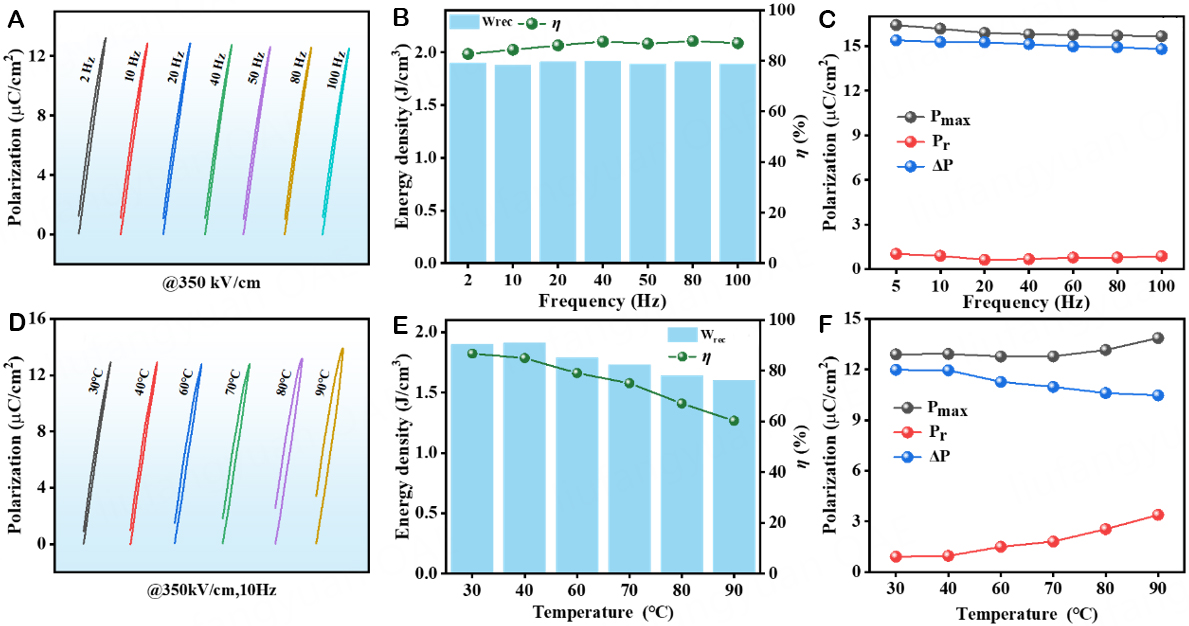
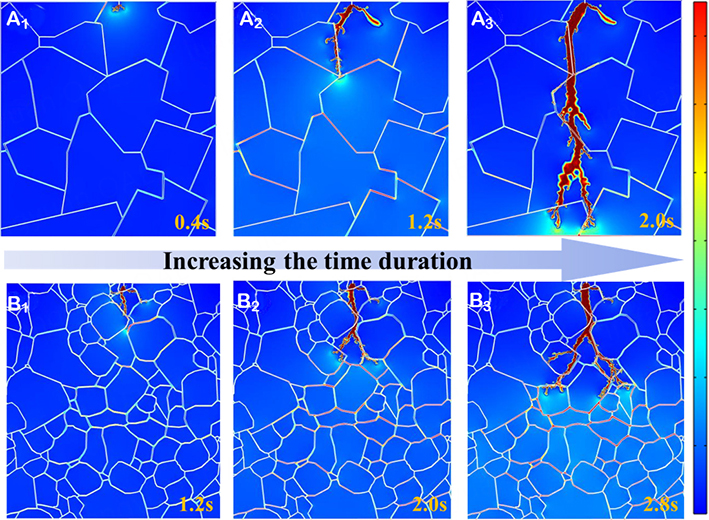
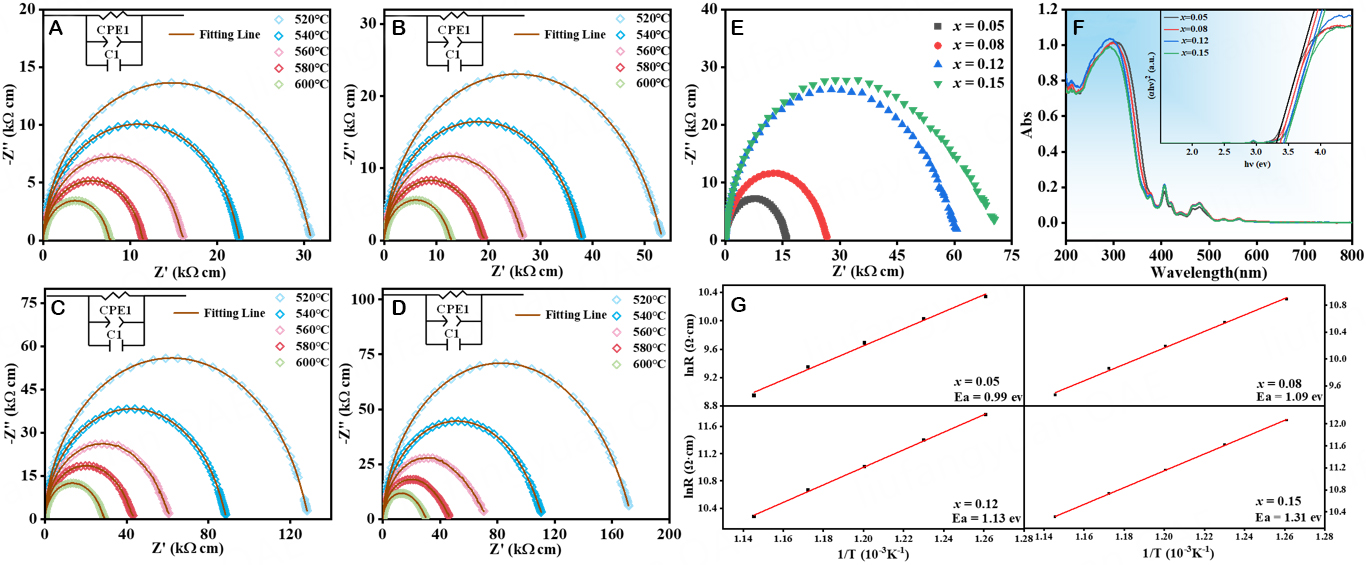
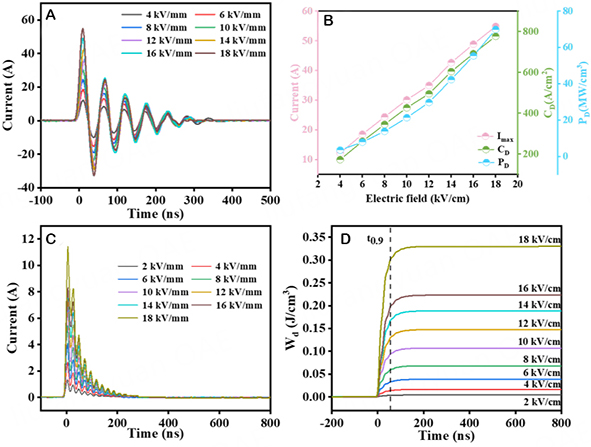










Comments
Comments must be written in English. Spam, offensive content, impersonation, and private information will not be permitted. If any comment is reported and identified as inappropriate content by OAE staff, the comment will be removed without notice. If you have any queries or need any help, please contact us at support@oaepublish.com.